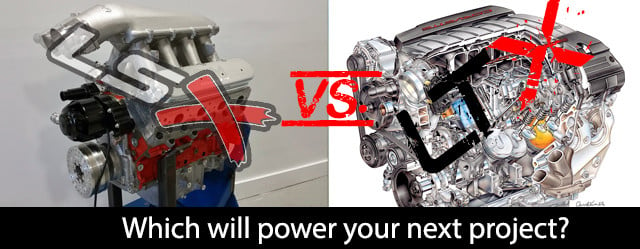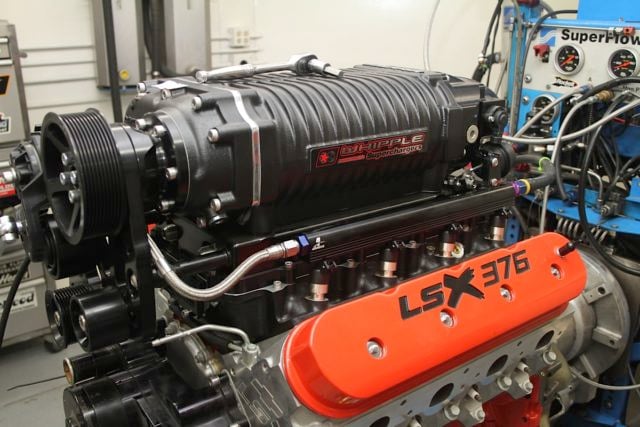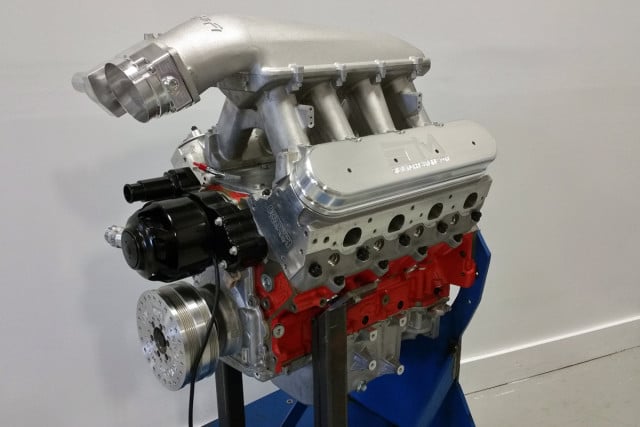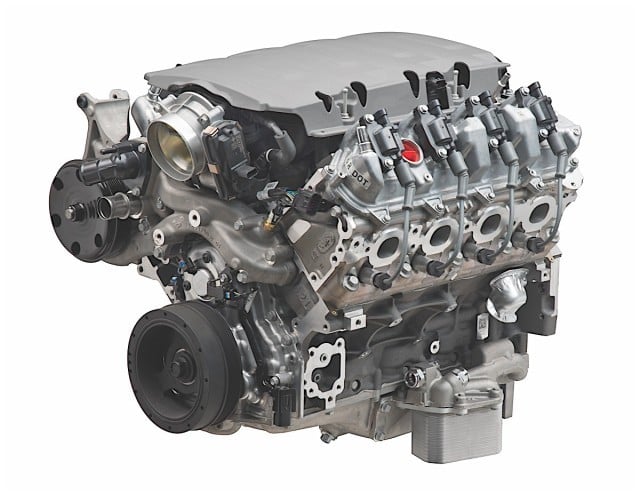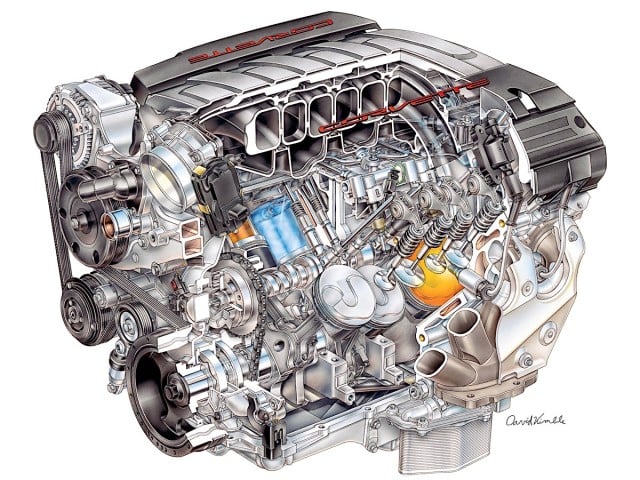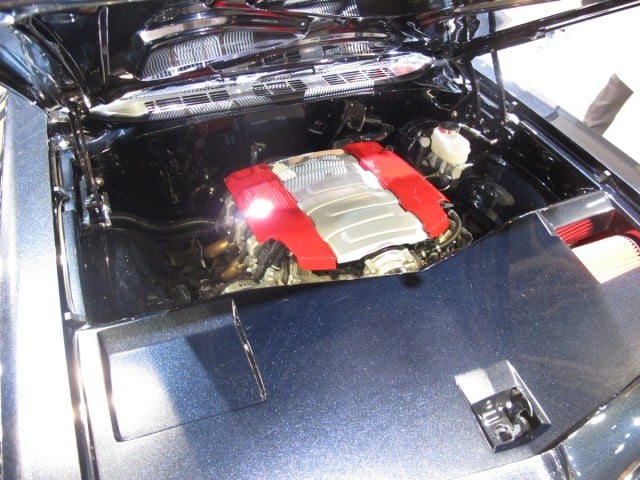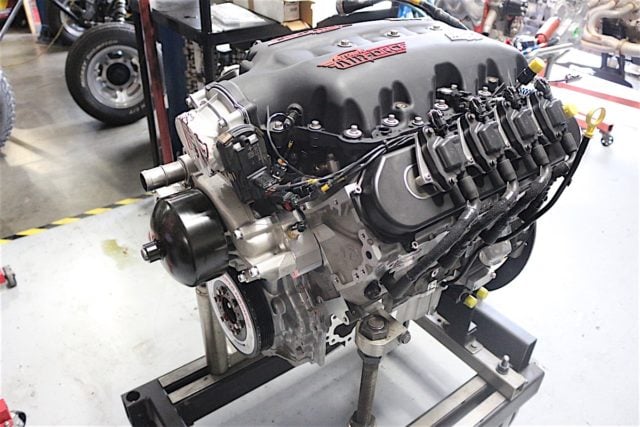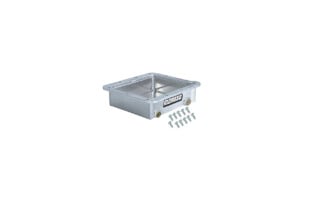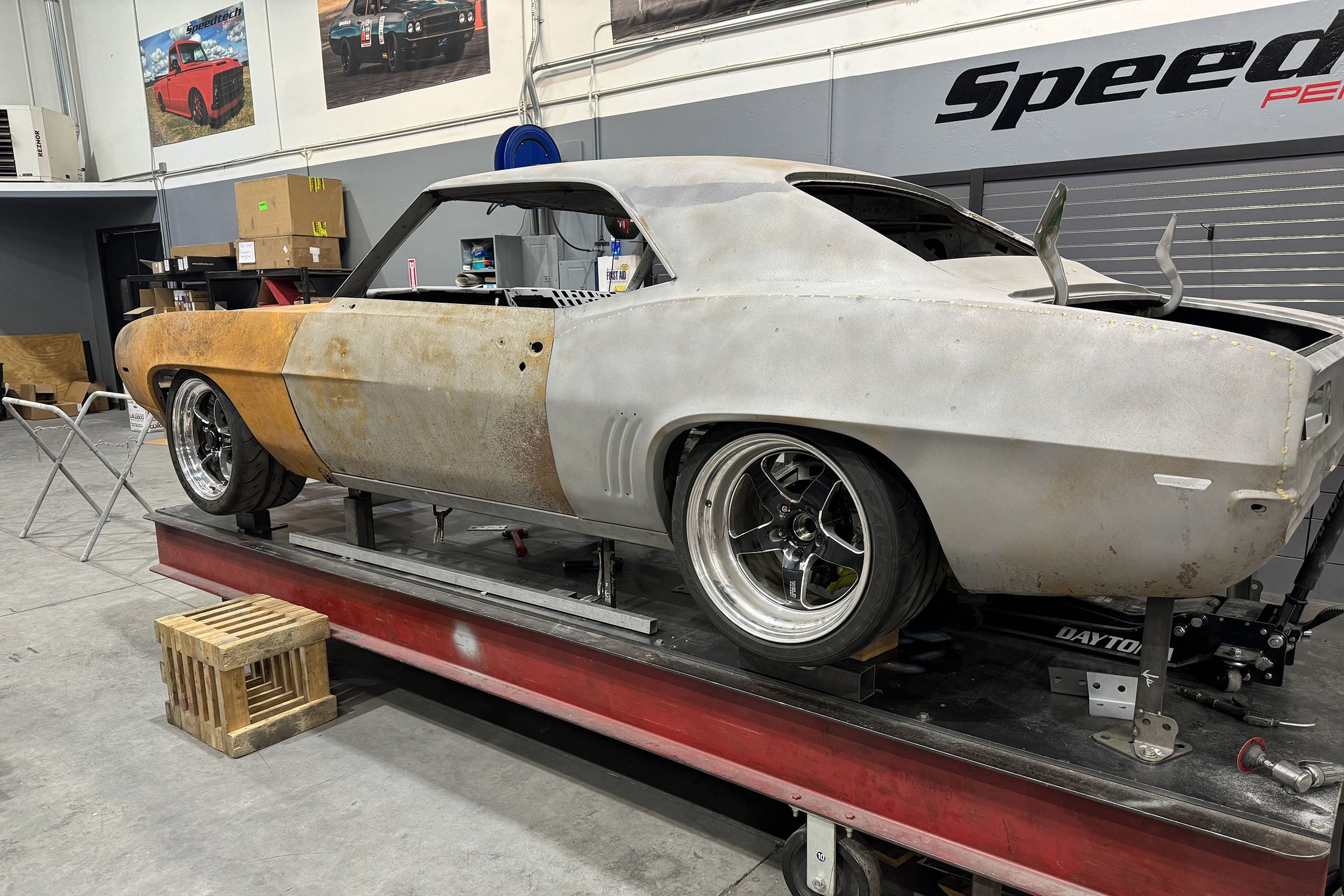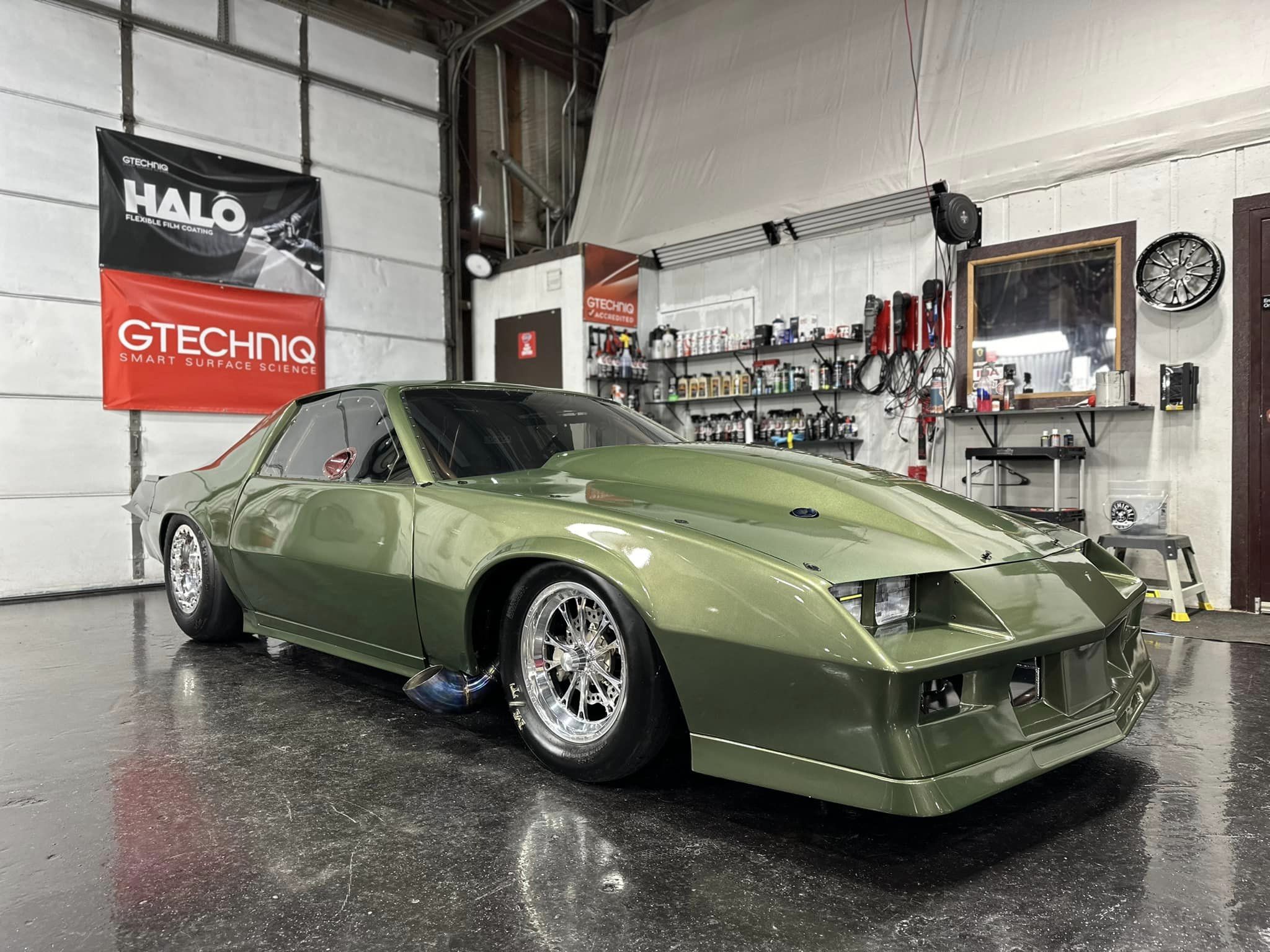When it comes to LS swaps, we’ve seen our fare share around these parts. From 5.3-liter junkyard motors to all-out builds pushing over 1,000 horsepower, we’ve either seen or done it ourselves. And while the LS engine’s reign at GM is coming to a close, they are sure to be popular for years to come—if not decades.
The good news is that they will most like just get cheaper from here on out as more and more find their way to a junkyard near you. The LT, on the other hand, is just picking up steam. In fact, we’ve already heard stories of L83s and L86s (the Gen V 5.3 and 6.2 truck engine respectively) being picked up in junkyards, which means a lot of them are headed our way. With that in mind, which one should you pick and why? While we might not be able to give you a final answer to that question, we can certainly lay out the pros and cons to each.
Why An LS? Pros:
If you’re reading this, you are probably well aware of all the advantages that an LS engine presents. They are simple, compact, and respond well to mods. On top of that, they are very reliable and their stock bottom ends can handle a lot more power than people give them credit for.
And though the LT is now on the scene, and we fully expect to start seeing more and more of these swaps pop up, it has a few draw backs that the LS just doesn’t. The LS engine’s simplicity is arguably what made it so popular in the first place. Its compact packaging and straight forward design naturally lend themselves to swaps of any variation—and we’ve seen these things in almost any car you could possibly imagine.
One of the strongest arguments for an LS is the fact that it has been around in one iteration or another for 20 years. Let that sink in for a minute. While the LS still seems like cutting edge technology in the realm of V8s, it has been around the block a few times—literally. That means there is a huge knowledge base out there for Gen III and IV engines. Any problem you’re likely to run into has most likely been solved by a manufacturer or, at the very least, a shade tree mechanic.
Why An LS? Cons:
However, that can also be a draw back in certain situations. While a lot of problems have been solved for you, companies no longer see the point in creating new products for what are referred to as “legacy” platforms. That means you are stuck with what is available currently. For example, if you are an LS1 F-body guy, your choices for supercharger kits are fairly limited these days—unless you are willing to improvise. This can be a hinderance in some situations.
As the industry shifts its focus to the Gen V engine, we are more likely to see some LS parts disappear due to a decrease in demand for them. This isn’t any manufacturer’s fault, it’s just the name of the game. There are a finite amount of LS engines out there and with people modding them at the rate they are, we will eventually see a point where everyone has moved on to LT-based builds or LS engines become very rare. Either way, eventually the aftermarket will shrink for the LS. However, look at the small-block Chevrolet, it’s been around for 63 years now and still has a plethora of aftermarket parts to choose from. Though the LS may wayne in popularity, it’s likely that aftermarket support will be there for decades to come.
Why an LT? Pros:
While the LS does have a lot of pros and not a lot of cons, the LT does have some advantages. Perhaps the largest being that its rotating assembly is substantially more robust, consisting of a forged crankshaft, powder metal forged rods, and hyperutetic pistons (Forged pistons in the LT4). This means the stock bottom end on an LT will probably take more abuse, though we’ve seen LS bottom ends handle up to 800 horsepower and beyond—however, we wouldn’t recommend it. We’ve yet to see the limits of the LT but know of shops making more than 1,000 rwhp on a stock bottom end LT4 without problem.
Another advantage to the Gen V engine is its variable valve timing and Active Fuel Management. While these features might be disabled later in high-horsepower builds, the technology allows the LT to produce astonishingly flat torque curves and massive amounts of power. Even some of the engine builders we’ve talked with lately are retaining variable valve timing, but liming the cam phaser’s movement with a limiter in order to retain the flat torque curves seen in stock configurations. Limiting the phaser provides room for more aggressive camshafts to be used while preventing piston to valve interference. This allows the tuner to perfect the torque curve by advancing or retarding the camshaft timing at any given load.
Yet another advantage to the Gen V engine is the direct injection, which allows for more precise fueling events and thus better power production and fuel economy. However, like we mentioned the differences can be marginal. One of the largest advantages the LS has right now is its cost. Whether you go with a junkyard block or one from a manufacturer, you can find them for cheap—that just isn’t true for the Gen V… yet.
But as we’ve seen before, prices of Gen V engines will most likely come down substantially in the coming years as wrecks and high-milage vehicles are put out to pasture. You won’t have to wait long to find a complete pull-out in the recking yard for around $1,000. By then, we’re sure that aftermarket support of the Gen V engine will have eclipsed that of the previous generation and a swap kit will be available for almost any chassis.
Why An LT? Cons:
While the LT-based engine offers a lot of advanced technology and new features, that can sometime be a drawback as well. The LT’s direct injection fuel system is vastly more complex than any LS engine’s. This adds a lot of unknowns to any project. There is a lot more than just tuning injector pulse width when it comes to direct injection. With direct injection, at any given RPM, the computer only has a finite amount of time to inject fuel into the engine, since it is spraying directly into the cylinder. Unlike standard port injection engines, where you could start the injection pulse width before the valve opens, direct port injections only have a finite time to spray the fuel while both the intake and exhaust valves are closed. This can lead to problems such as fuel pooling on the piston or the injector spraying when the intake or exhaust valve is open, leading to fuel losses through the intake or exhaust—and thus power loss.
The new generation engine also uses a torque management based operating system that is vastly more complex than even the most recent LS operating systems. Even experienced tuners are struggling to get these systems sorted, so it would be a good idea to have a tuner in mind if you are going to modify your LT once it is in the chassis of your choosing. If you are planning to learn to tune it yourself, it might be a somewhat steep learning curve since, as we mentioned before, even the top tuners in the country are still sorting them out.
The LT also lacks a power steering pump for those that are looking to retrofit a Gen V engine into a vehicle that has hydraulic power steering. Again, this ads complexity. Currently, there are several companies working to provide a retro fit kit or solution to the power steering conundrum, but right now they are few and far between. This is a big hinderance to anyone who may be thinking of doing an LT swap into their vehicle but would like to retain power steering.
The final draw back to an LT swap is that there just isn’t a lot of engine mounts or swap headers out there just yet. While we are sure they are on their way, and we’ve seen companies beginning to provide kits for some popular chassis, if you are looking to swap a Gen V engine into your vehicle it is most likely going to take a least some fabrication. Swap headers are also starting to gain momentum, but at the moment there are only a few offering. A set of custom headers would have to be made if there isn’t currently a company who offers them.
Conclusion
While we’ve listed some of the pros and cons to either choice, both are fantastic power plants, the likes of which our fathers never dreamed. You really can’t go wrong in choosing either as they are likely to make gobs of power and serve you faithfully for years to come. The real question will likely be whether you want to go with a proven platform or opt for something a little more technologically advanced, but less proven and likely more complicated.
Though the LT has great power potential and great new tech, we think the LS will retain its popularity due in great part to the simplicity of installing one. Much like the LS in its infancy, the aftermarket simply is still playing catchup when it comes to the Gen V. Though it is advancing much quicker than we saw with the LS, there are still a lot of things to be sorted out with the LT. The power potential between an LS and LT is not all that different from what we’ve seen and the Gen V is typically held back by fuel system concerns—though we’re sure the aftermarket is working on a solution to that one.
But no matter what, we don’t think a challenge should hold you back from doing what you want. That’s why you’ll be seeing even more LT swap on LSX Magazine as we work to solve some of these problems for you and find out just how capable the Generals new mill really is.



